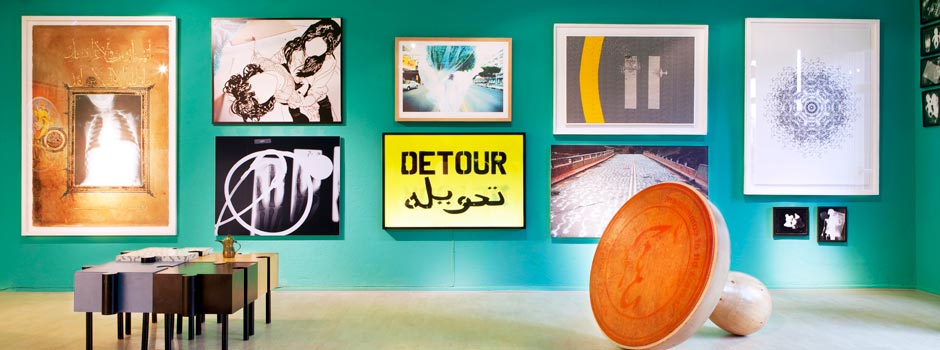
AN INTERVIEW WITH AARNOUT HELB, FOUNDER AND CURATOR OF GREENBOX MUSEUM Contemporary Art from Saudi Arabia in Amsterdam
Feb 14, 2013 Interview

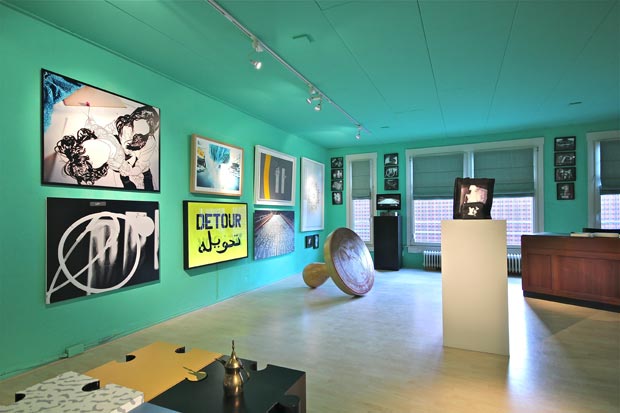 The Greenbox Museum of Contemporary Art from Saudi Arabia, installation view / Courtesy of the Greenbox Museum
The Greenbox Museum of Contemporary Art from Saudi Arabia, installation view / Courtesy of the Greenbox Museum
The museum as a venture to research, collect and share was founded in 2008. In Amsterdam because that's where I live. I rented a space close to my house. Doors opened quietly a year later and the art audience was slow in noticing that something new was happening. Amsterdam is full of projects that last only a few months. They all advertise and print flyers with grants and subsidies and I did not want to spend my budget on much else than the rent and the art itself. By word of mouth and because of continued reports in newspapers people, however, increasingly find their way to the museum. The large number of people that have liked the museum on facebook also helps, although they live mostly in countries like Algeria, Egypt, Pakistan and Indonesia and are not usually able to visit.
The museum seems to surprise people when they visit. The Dutch audience doesn't expect Saudi Arabians to make intelligent artwork. I think people are even scared of the country. In the media Saudi Arabia is bit like a dragon in a fairy tale. It is then for knights to slay that dragon or for artists to look it in the eye and talk to it. Yesterday a visitor said the museum had really opened a new window for them. Organizing multicultural dialogues however is not my trade. The museum collects art and in doing so prefers to demonstrate the universality of much of humanity's behaviour.
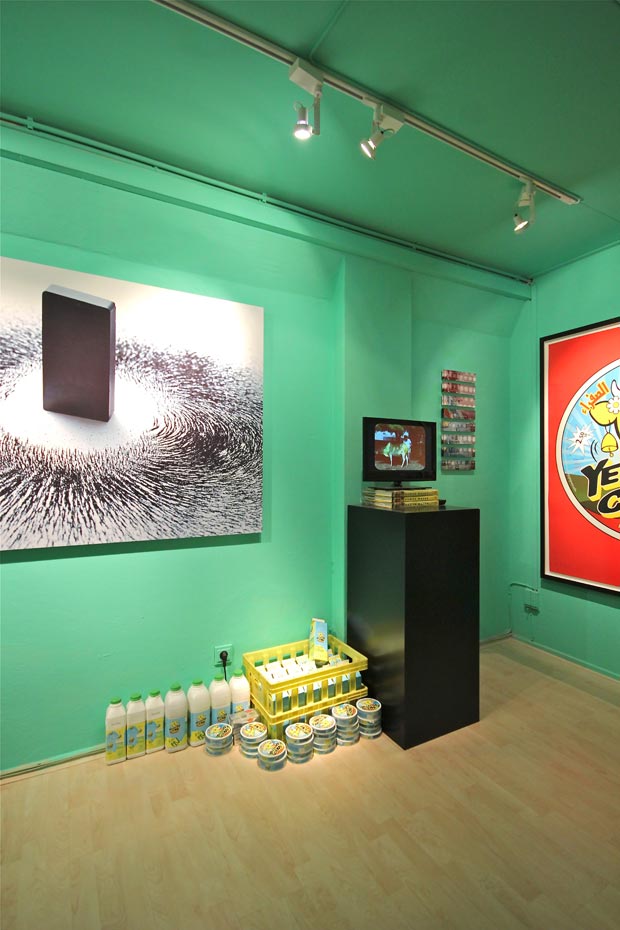 The Greenbox Museum of Contemporary Art from Saudi Arabia, installation view / Courtesy of the Greenbox Museum
The Greenbox Museum of Contemporary Art from Saudi Arabia, installation view / Courtesy of the Greenbox Museum
I spend hours telling visitors about the artworks in the museum. There are no signs on the walls or audio cassettes, I receive people myself. Usually I let them choose where to begin. I started myself with researching a Sura in the Quran about a bright yellow cow that was 'pleasing to the beholders' and discovered Ahmed Mater had made art about it and was soon going to curate the first Edge of Arabia exhibition. The artwork which I have recently cared most about to show visitors is Abdulnasser Gharem's Flora and Fauna in which he wrapped himself with an imported tree on the streets of Abha to illustrate how bringing too much foreign knowledge to the country might undervalue local knowledge and the talents of its own people. On the other hand, I am always excited to receive new work and am now expecting a video registration of Sara Abu Abdallah's ’Recommence' and several of her photos, which are on their way from Riyadh to Amsterdam.
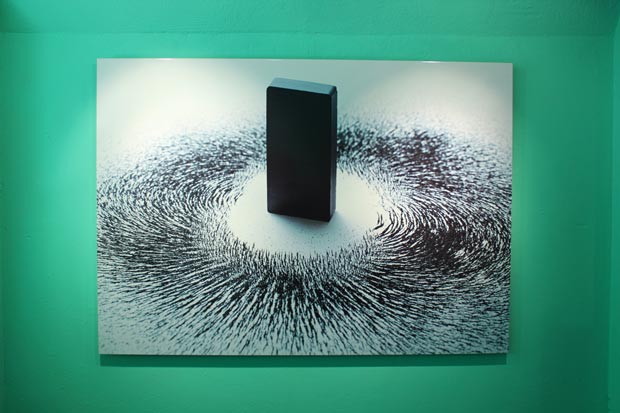 Ahmed Matar / Magnetism (Photograuve), 2012, Photograuve etching print, 62x81 cm / Courtesy of the Greenbox Museum
Ahmed Matar / Magnetism (Photograuve), 2012, Photograuve etching print, 62x81 cm / Courtesy of the Greenbox Museum
The Netherlands used to have colonial ties with Indonesia and because of the many pilgrims to Makkah from that country we had early and good relations with Saudi Arabia, which have been forgotten in recent times. But nowadays, in the larger cities like Amsterdam and Rotterdam there are many immigrants who are Muslims or who at least treasure their heritage. Because of the duty of Hajj, I think Europe, like much of the rest of the world, will inevitably have long term relations with the custodians of Makkah and we might better work on making them as elegant and well informed as possible. Having said that, the museum itself is just about art and only about religion when artists reflect on it in their work. And artists are no imams, so you should allow them to make mistakes and explore. I have no criteria and am always torn between beauty and content. But I never choose for beauty alone. A description of the current art scene in Saudi Arabia is something perhaps better asked of Alaan Artspace or Lam Gallery in Riyadh and Athr Gallery in Jeddah. The museum collects the art, not the scene. It would also be difficult to import, although some Saudi artists have now visited the Dutch art scene.
I haven't had much time to work on the dictionary. The basic idea was to share all of the museum's research online, while collecting the finest work in the museum. It followed the example of a 1950's encyclopaedia of Dutch artists, which aimed to be complete. I need to evaluate how to continue with it at some point in the future. It was perhaps too ambitious.
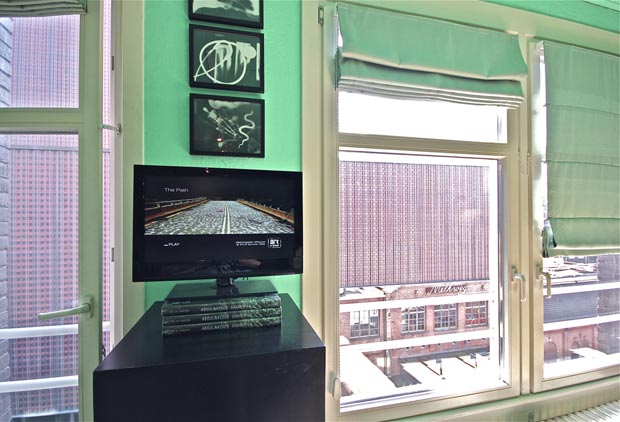 The Greenbox Museum of Contemporary Art from Saudi Arabia, installation view / Courtesy of the Greenbox Museum
The Greenbox Museum of Contemporary Art from Saudi Arabia, installation view / Courtesy of the Greenbox Museum
Interesting question. I've never asked them. Following 9/11 the Dutch government has sent soldiers, helicopters, airlift capacity, fighter jets, submarines and frigates to deal with Afghanistan and Iraq, apparently without noticing the simple fact that not a single Afghan piloted an airplane on 9/11 and fifteen Saudi's did. At the same time the Government's art institutions all started organizing 'Islamic art' exhibitions somehow to counterbalance feelings of unease in society. Exhibiting the 18th and 19th century objects from the Khalili collection in Amsterdam, however, does not do much to allow the citizens of the Arabian peninsula to express themselves or us to understand what was and is really going on in their world. The question is not whether the Government will support the Greenbox Museum, but why in the past five years I have not seen any interest in Saudi Arabia on the side of the curators of Dutch institutions like the Stedelijk Museum, Rijksmuseum Volkenkunde or Tropenmuseum, which were all founded and funded to collect the world.
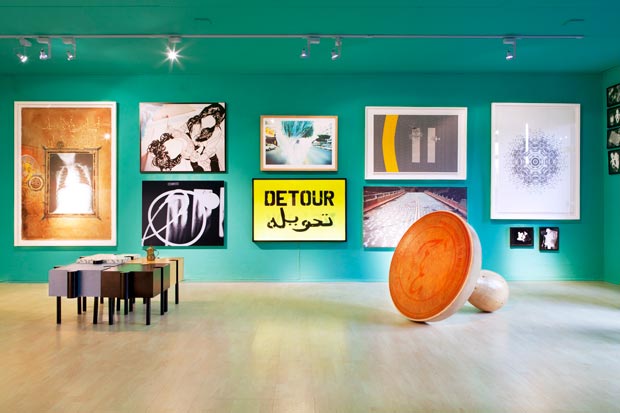 The Greenbox Museum of Contemporary Art from Saudi Arabia, installation view / Courtesy of the Greenbox Museum
The Greenbox Museum of Contemporary Art from Saudi Arabia, installation view / Courtesy of the Greenbox Museum
To collect more art and enjoy our steadily increasing, but still modest, number of visitors.
Thank you for your interest. Let your readers know that they should not travel all the way to Amsterdam for the Greenbox Museum alone. But when they visit Amsterdam for other reasons —perhaps for the expanded and reopened Stedelijk Museum and soon the Rijksmuseum— they might enjoy the detour.
Comments
Add a comment